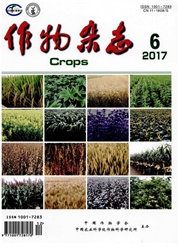

 中文摘要:
中文摘要:
以吉林省26个主推玉米杂交种为材料,在适宜耐盐碱筛选的2个浓度水平(25mmol/L的Na2CO3、100mmol/L的NaCl)下,利用沙培法进行种子萌发和幼苗胁迫试验,分别测定发芽率、相对电导率、超氧化物歧化酶(SOD)活性、丙二醛(MDA)含量、脯氨酸(Pro)含量等适宜耐盐碱筛选的5项生理生化指标,比较上述杂交种的耐盐碱能力。结果表明:①不同材料间耐盐碱能力差异显著;②在28个玉米杂交种(包括2个对照品种郑单958和先玉335)中,耐盐碱性前五位依次为郑单958、先玉335、吉单35、四单19、吉单27;研究结果将为玉米杂交种的区域布局提供参考。
 英文摘要:
英文摘要:
Under alkali-stress condition (25mmol/L Na2CO3) and salt-stress condition (100mmol/L NaCl),twenty-six maize hybrids were cultivated by sand culture.The five appropriate physiological and biochemical indices were tested and used to evaluate salt-alkali tolerance of the hybrids,which included germination percentage,relative conductivity,SOD activity,MDA content and proline content.The main results were summarized as follows:①different varieties were obviously different in salt-alkali tolerance;②Among twenty-eight maize hybrids,the top five in salt-alkali tolerance were Zhengdan 958,Xianyu 335,Jidan 35,Sidan 19 and Jidan 27.The results will provide reference for regional layout of maize hybrids.
 同期刊论文项目
同期刊论文项目
 同项目期刊论文
同项目期刊论文
 期刊信息
期刊信息
